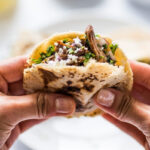German Food, a delightful blend of hearty traditions and regional specialties, is a cuisine worth exploring. On larosafoods.com, you’ll discover authentic German recipes, cooking tips, and nutritional information to bring the taste of Germany to your table. Uncover the rich tapestry of German culinary heritage with dishes featuring bread, potatoes, meat, and delightful desserts!
1. What Are The Top 10 Traditional German Foods You Should Try?
When visiting or exploring German cuisine, be sure to try these classic dishes:
- Brot & Brötchen (Bread & Rolls): A staple at every meal.
- Käsespätzle (Cheese Noodles): A comfort food similar to macaroni and cheese.
- Currywurst (Curry Sausage): A popular street food snack.
- Kartoffelpuffer & Bratkartoffeln (Potato Pancakes & Fried Potatoes): Versatile potato dishes for any meal.
- Rouladen (Beef Rolls): Bacon and pickles wrapped in thinly sliced beef.
- Schnitzel (Cutlet): A breaded and fried meat dish.
- Eintopf (Stew): A hearty one-pot stew.
- Sauerbraten (Sour Roast): A pot roast marinated in a sweet and sour sauce.
- Brezel (Pretzel): A baked dough snack, often served with salt.
- Schwarzwälder Kirschtorte (Black Forest Gateau): A layered chocolate cherry cake.
Let’s delve deeper into each of these iconic German foods.
1.1. Brot & Brötchen: The Heart of the German Table
Bread is a cornerstone of German cuisine, served with almost every meal. Bread is particularly enjoyed during breakfast and dinner. Germans enjoy a wide variety of breads, including grain, pumpernickel, rye, and white bread. Compared to bread from Italy, Spain, or France, German bread is generally heavier and heartier. According to a study by the German Association of Bakers, bread consumption remains a significant part of the daily diet, with an average household consuming around 500 grams of bread products per day.
1.2. Käsespätzle: Germany’s Cheesy Comfort Food
Käsespätzle is a popular dish from southwestern Germany, consisting of small Spätzle pasta layered with grated cheese and topped with fried onions. Käsespätzle is often served with a side salad and applesauce. For those familiar with macaroni and cheese, Käsespätzle offers a deeper, more complex flavor profile.
1.3. Currywurst: Berlin’s Beloved Street Food
Currywurst is a quintessential German street food, especially popular in Berlin. Consisting of chopped sausages topped with a spicy ketchup-based sauce and curry powder, it’s a quick, tasty, and satisfying snack. Though not particularly nutritious, its popularity speaks to its irresistible flavor and cultural significance. As noted by the Berlin Tourism Board, over 800 million Currywursts are eaten in Germany each year, highlighting its iconic status.
1.4. Kartoffelpuffer & Bratkartoffeln: Celebrating the Humble Potato
Kartoffelpuffer is a shallow-fried pancake made from grated potatoes, egg, and flour, similar to a Swiss Rösti. Bratkartoffeln, on the other hand, are like sautéed or hashed potatoes, where parboiled potato chunks are fried with onions and bacon. Both dishes are versatile and can be enjoyed for breakfast, lunch, or dinner. According to the German Potato Association, potatoes are the most consumed vegetable in Germany, appearing in various forms across different meals.
1.5. Rouladen: A Festive Family Favorite
Rouladen is a traditional German dish featuring bacon and pickles wrapped in thin slices of beef or veal, often served with gravy, dumplings, mashed potatoes, and cabbage. Commonly enjoyed during holidays and family gatherings, Rouladen is a hearty and flavorful meal. While its exact origins are debated, it’s believed to have French influences, explaining its name.
1.6. Schnitzel: A Classic Breaded Cutlet
Schnitzel is made by tenderizing a piece of meat (such as chicken, beef, veal, or pork), coating it in egg, flour, and breadcrumbs, and then frying it in oil. Similar to a French escalope, the Schnitzel actually originated in Austria. Schnitzel served with fries is a popular choice in bars, restaurants, and fast-food eateries. According to a survey by the German Restaurant Association, Schnitzel is one of the most frequently ordered dishes in German restaurants.
1.7. Eintopf: The Ultimate One-Pot Meal
Eintopf is a one-pot stew that includes a variety of ingredients such as broth, vegetables, potatoes, and meat, and sometimes pulses like lentils. A meal-in-one, Eintopf is typically served with bread. There are vast regional differences in the flavors and ingredients used to make Eintopf. Eintopf is often enjoyed at home as a family meal and is an easy German recipe to start with.
1.8. Sauerbraten: A Tangy Pot Roast
Sauerbraten is a German pot roast, literally translating to “sour roast.” The meat, usually veal, beef, or pork, is marinated for days or even weeks in a sweet and sour sauce before being slowly roasted. Sauerbraten is found throughout Germany and German-speaking countries. Culinary historian Ursula Heinzelmann notes that the key to a good Sauerbraten lies in the marinating process, which tenderizes the meat and infuses it with a distinctive flavor.
1.9. Brezel: The Iconic German Pretzel
Brezel, the German term for pretzel, is made with a long strip of dough folded into a knot, boiled, and then baked, resulting in a chewy brown crust and soft, fluffy interior. Typically flavored with salt, seeds, or cheese, it’s often served with a mustard dip. The origin of the Brezel is contested, but it has long been associated with Christian celebrations, with the knot shape viewed as a symbol of the holy trinity.
1.10. Schwarzwälder Kirschtorte: A Decadent Dessert
Schwarzwälder Kirschtorte, also known as Black Forest Gateau, is a layered chocolate sponge cake with cherries, jam filling, and cream. Originating from the Black Forest region in southwest Germany, it’s a popular choice for Kaffee und Kuchen, the German tradition of enjoying cake and coffee in the afternoon. German food blogger Helga Schmidt recommends using high-quality Kirschwasser (cherry brandy) to enhance the cake’s authentic flavor.
2. What Do Germans Like To Eat?
Germans enjoy hearty, home-cooked meals, especially their national and regional dishes. However, they are also increasingly open to foreign foods, particularly in cosmopolitan cities. In major cities, you can enjoy a variety of cuisines, including American, French, Italian, Thai, Chinese, and Indian. Turkish food is also very popular in Germany, thanks to a large Turkish community. The Döner Kebab was even invented in Berlin.
3. What Are Some Typical German Beverages?
Germans enjoy a wide range of drinks at mealtimes and throughout the day. They tend to have a more relaxed but moderated view of alcohol compared to many other countries, drinking plenty but not typically “binging.” Drinking beer is about enjoying the taste. The legal drinking age is 16 for beer and wine, but 18 for spirits or liquor.
3.1. What Do They Drink in Germany?
During the day, Germans drink a lot of coffee, although tea is becoming increasingly popular. Black filter coffee is typically enjoyed in the morning. Coffee is also consumed in the afternoon with cake during Kaffee und Kuchen, often with milk or cream. At mealtimes, locals drink juices like apple juice, as well as sparkling water. Juice mixed with carbonated water (Schorle) is a refreshing and popular choice, too. Among adults, drinking alcohol is common in Germany. Beer, schnapps, brandy, and German wines like Riesling are enjoyed in bars, restaurants, and at home.
3.2. What Is the Most Popular Drink in Germany?
The most popular alcoholic drink in Germany is beer, while the most popular non-alcoholic drink is coffee.
4. German Beer: A Cultural Icon
Beer is a very important aspect of German culture. Germany is the third-biggest beer-drinking country in Europe after the Czech Republic and Austria. The average German consumes around 104 liters of beer per year. In bars, beer is typically served in 300 ml or 500 ml tulip glasses or in half-liter or full-liter steins. A stein is a type of tankard made traditionally of ceramic or metal but more commonly in glass today. These heavy, handled vessels sometimes feature levered lids, which are said to have originated during the Black Death to protect the beer from flies. Germany produces a lot of the beer its residents consume, although the country does import some Belgium, French, Austrian, and Czech beers. The nation is thought to be the world’s oldest beer-brewing country, with the earliest commercial brewery believed to have been in an 11th-century Benedictine Abbey. This brewery, Weihenstephan, is still operating today. Originally, beer in Germany was brewed in homes, but as monks took over the responsibility, they worked hard to improve the process, taste, and purity. The monks modernized beer production throughout the Middle Ages, and these medieval practices are often still used today.
4.1. German Beer and the Purity Law
In 1516, a law known as the “purity law” (Reinheitsgebot) was established. This dictated that only three ingredients may go into beer: water, hops, and barley. When yeast was discovered, it was added as a fourth sanctioned ingredient. This 500-year-old law is still in practice today, although those producing beer for export are allowed to add other ingredients.
4.2. Types of German Beer
It is said that you can drink a different German beer every day for 15 years before needing to have the same one again. Among these thousands of beers, some key varieties are worth familiarizing yourself with.
| Beer Type | Description |
|---|---|
| Pale Lager | Most common beer in Germany, including export, Helles, and pilsner beers. |
| Dark Lager | Bitter, sweeter, and more malty, with ABVs ranging from 5% up to 12%. |
| Wheat Beer | Light-colored, top-fermenting beer with a higher proportion of wheat. |
| Unfiltered Lager | Naturally cloudy, less carbonated, and stronger in taste. |
| Beer with mixers | Beer mixed with soft drinks to make it lighter, such as Radler and Diesel. |
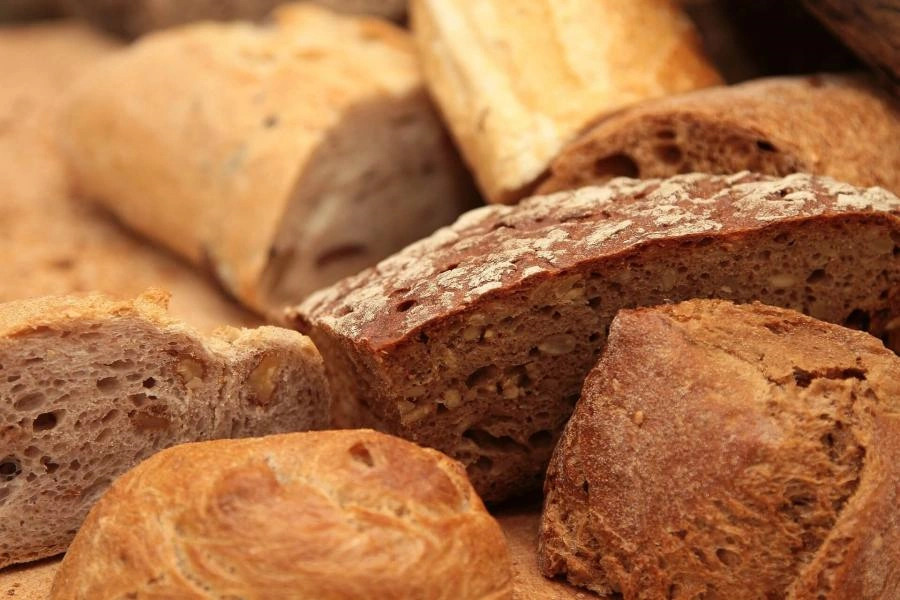

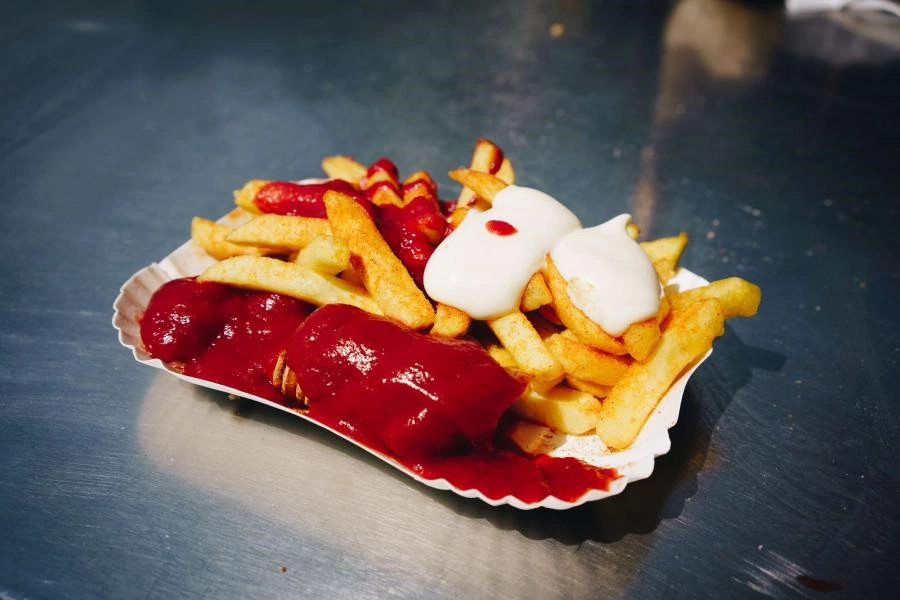

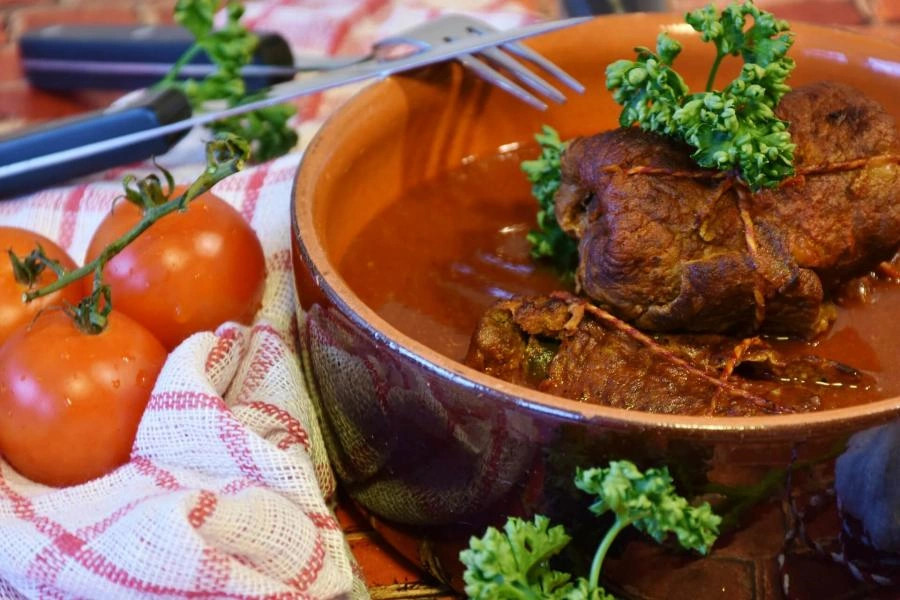
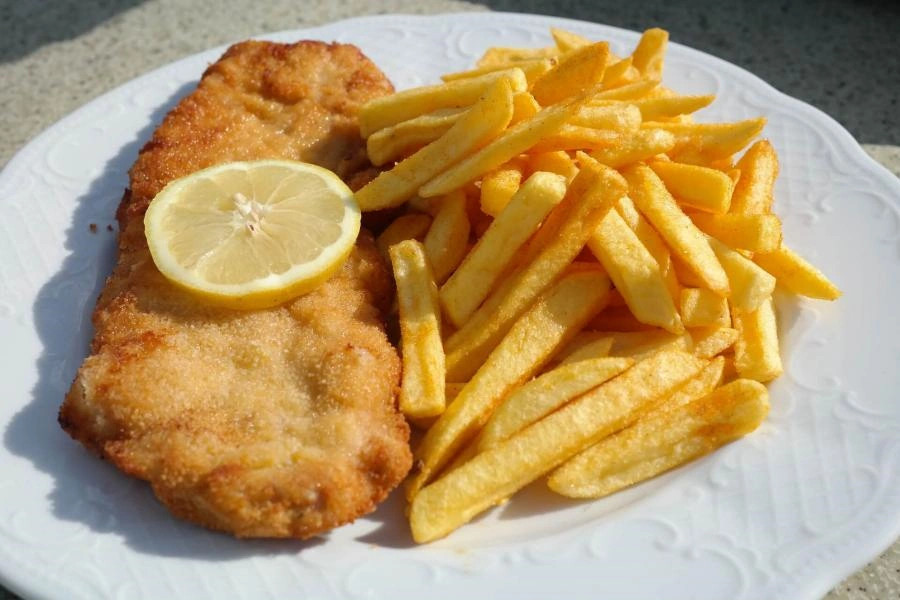
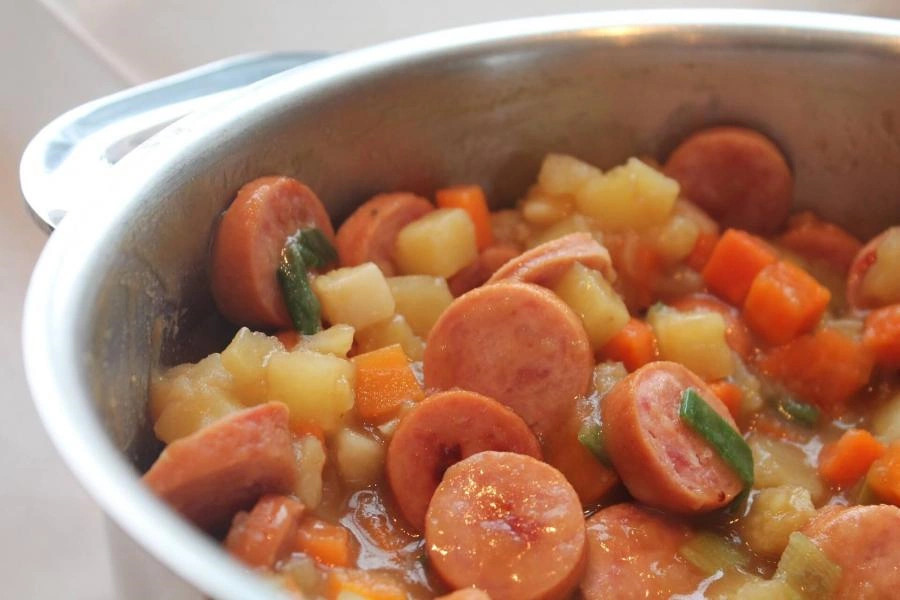
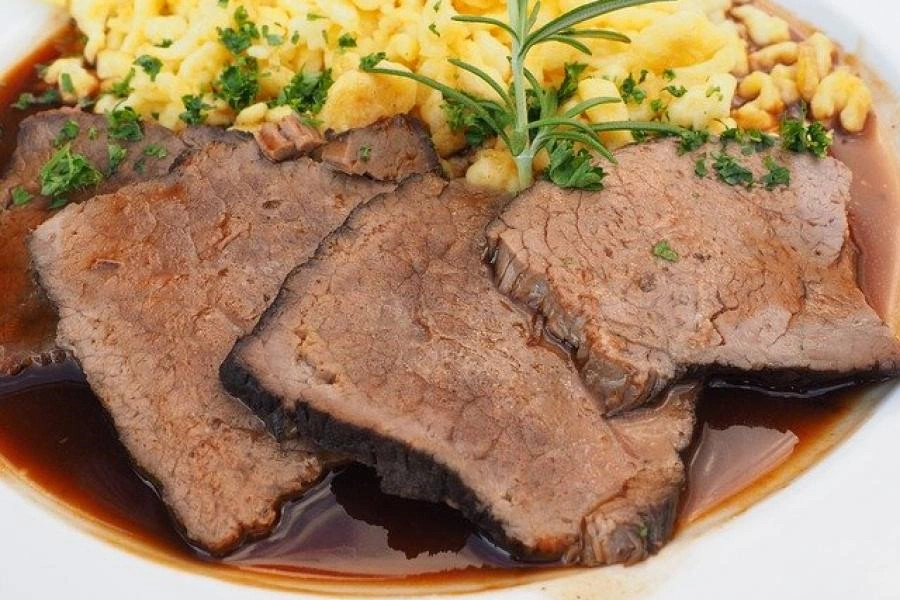
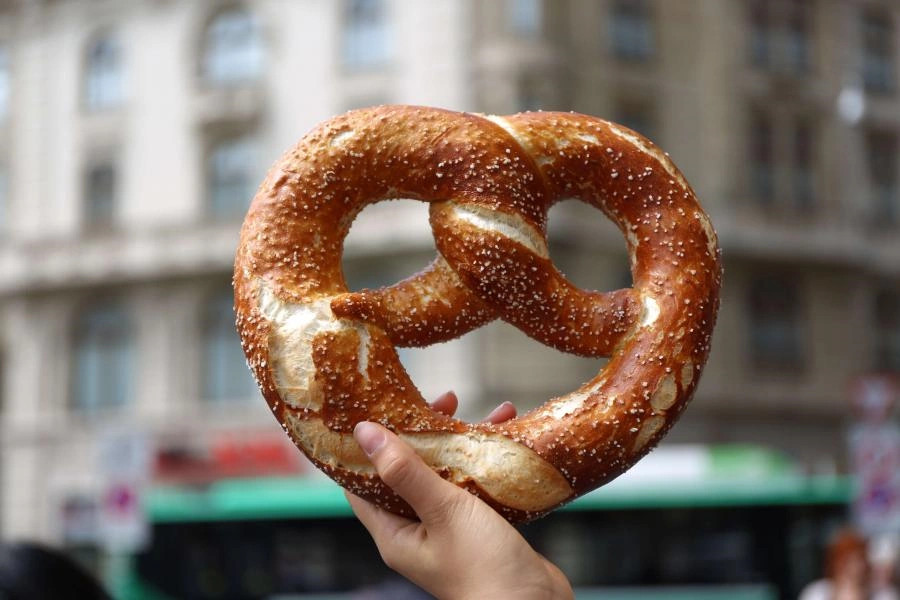
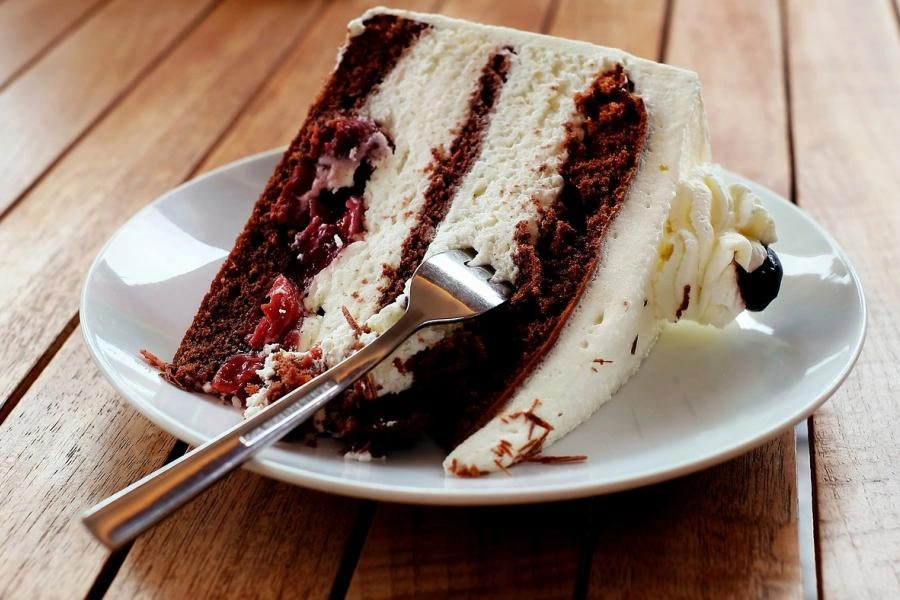
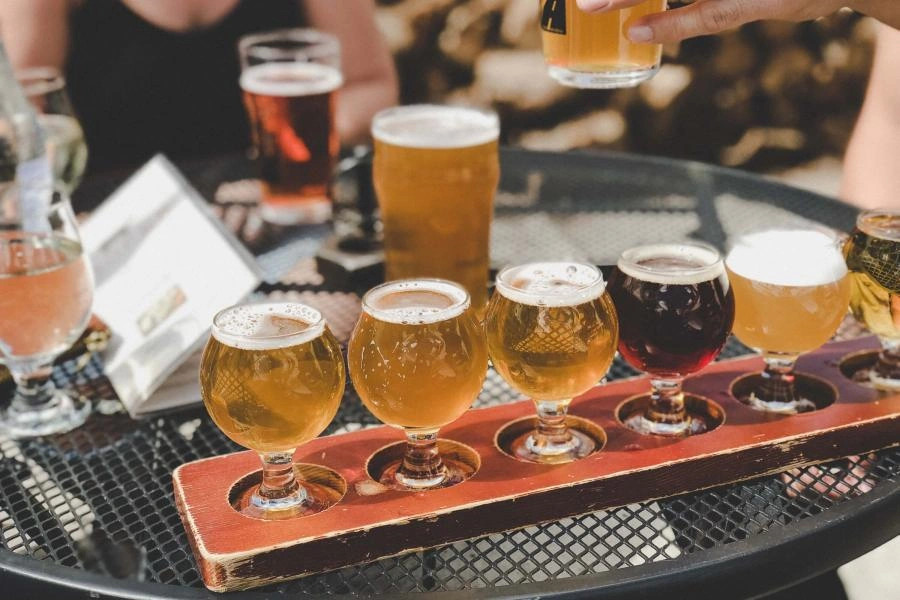
4.2.1. Pale Lager
Pale lager is the most common beer in Germany and includes varieties such as export, Helles, and pilsner beers. Pilsner is characterized by a light body, a hoppy flavor, and a typical ABV of around 4.5-5%. Pilsner accounts for almost two-thirds of all beer enjoyed in Germany. It is commonly served in a tulip glass usually in a choice of 300 or 500 ml – roughly comparable to the UK’s half pint or pint measures.
4.2.2. Dark Lager
Dark lagers tend to be both bitter and sweeter as well as more malty. They also tend to be stronger with ABVs ranging from 5% up to 12%. Types of dark lager include Altbier and Bock.
4.2.3. Wheat Beer
Wheat beers may be labelled as both Weizenbier, Hefeweizen (both mean ‘wheat beer’) or Weißbier (white beer). It is a light-colored, top-fermenting beer with a higher proportion of wheat to barley. Wheat beer is sold in bottled and decanted into dedicated glasses that can hold around 500 ml of beer but also have space for the large frothy ‘head’. Dark (Dunkel) versions are also popular.
4.2.4. Unfiltered Lager
Conditioned similarly to English cask ale, German unfiltered lager, known as Kellerbier (cellar beer) or the weaker Zwickelbier. Naturally cloudy thanks to the retention of the yeast, and either top or bottom fermented, it is much less carbonated than standard lagers and tends to be stronger in taste.
4.2.5. Beer with Mixers
For a country with such purist brewing laws, it may be surprising that many Germans ask for their beer to be mixed with a soft drink to make it lighter. Radler (lemonade and lager 50/50) resembles a British shandy, and it is sometimes known as a Russ when the beer is Wheat Beer. The terms Diesel, Krefelder, and Colabier all refer to beer and cola mixed 50/50.
4.3. German Breweries
The biggest selling German breweries are:
- Oettinger
- Krombacher
- Bitburger
- Radeberger
The big, commercial breweries tend to be located in the north of the country, while the smaller, more traditional breweries are found to the south. In total, there are around 1,300 breweries in Germany, together producing 5,000 brands of beer. Much of the beer made in Germany is exported. Germany produces a third of the world’s beer and boasts 15,000 beer brands. In trendy cities such as Berlin, craft beer is enjoying huge popularity.
4.4. German Beer Festivals
Around the time of the harvest (late September, early October), traditional beer festivals take place all over Germany. The most famous, of course, is the Munich Oktoberfest festival, which attracts over six million visitors each year. More than just a celebration of beer, attendees dress up in traditional Bavarian clothes and enjoy entertainment and a funfair too. Only beer over 6% which has been brewed in the Munich area can be served. Each year, around seven million liters of beer are enjoyed at this major event. Other Oktoberfests take place in Stuttgart, Berlin, and Frankfurt, so wherever you are in Germany, you are never far from a beer festival.
4.5. German Bar
When you go to a German bar and simply ask for a ‘beer’, you will most likely be given a regional beer. If you want to try something else, such as a non-local wheat beer, dark beer, or pilsner, then ask specifically for what you want. If you’re living in or visiting a town or city with a particularly famous, acclaimed, or historic brewery, then it’s worth taking a tour, which usually includes some free tasters.
5. Regional Cuisine and Specialties
German cuisine varies significantly by region, each offering unique flavors and dishes.
5.1. What Food Is Germany Famous For?
Bavarian food puts meat at the center of most meals, especially sausages, goose, and pork. Due to the proximity to Austria, this is also where you will find plenty of Schnitzel on the menu. (The term Schnitzel means simply ‘cutlet’).
In Baden-Wuerttenberg to the west, food has a more refined French influence. This includes dishes such as Maultaschen, a pasta dish similar to ravioli with pockets of pasta containing meat, herbs, and spices. Although the dish is made with finesse, the name literally comes from the term ‘meal bags’. The meat was traditionally hidden inside the pockets during lent when people were meant to eat less meat.
The area to the north that sits on the Baltic Sea (Lower Saxony) is where you are more likely to enjoy seafood, such as rollmops and herrings. Cake is enjoyed nationally, but regional variations include Schwarzwälder Kirschtorte from the Black Forest and the brilliantly named Bee Sting cake (Bienenstich Kuchen) from Andernach, so-called because the cake was made as a celebration after soldiers from Andernach and Linz used bee hives as a form of weaponry.
5.2. What Is the Main Food in Germany?
Despite these regional differences, some meals such as Rouladen, Sauerbraten, and Einhopf are enjoyed all over the country. These are considered national dishes. Of all these regional and national dishes, Germany is most famous for Currywurst, sausages, pretzels, and Black Forest Gateau, but there is plenty more to German cuisine than just these.
5.3. What Is Germany’s Traditional Food for Christmas?
On December 24th and/or 25th, German Christmas food usually involves roast duck, goose, or even wild boar. This is usually served with potato dumplings, red cabbage, and apple and sausage stuffing. For dessert, there is nothing better at Christmas than a famous Stolle fruit cake or Lebkuchen biscuits.
6. Meal Structure in Germany
German meals are structured distinctively, with hearty breakfasts, substantial lunches, and lighter dinners.
6.1. What’s a Typical German Breakfast, Lunch and Dinner?
6.1.1. Breakfast
Breakfast in Germany is called Frühstück and almost always includes a hot drink such as tea or coffee. Breakfasts in Germany tend to be fairly hearty and often start with some bread or rolls served with spreads such as butter, jam, and marmalade. Sausage, eggs, cheese, and bacon are common breakfast items, as are potato pancakes. Cereal, especially muesli, or yogurt and fruit are increasingly popular in Germany, especially with the more health-conscious youth. A glass of orange juice is also common with breakfast.
A second breakfast, known as Pausenbrot or a Zweites Frühstück, is common in Germany, especially at school. This refueling snack often takes the form of a small sandwich or some fruit.
6.1.2. Lunch
Lunch in Germany is called Mittagessen and is usually eaten between 12 pm and 2 pm. Germans traditionally enjoy their main cooked meal for lunch rather than dinner. Lunch is often served after a starter such as potato salad. Lunches cooked at home may include Eintopf, Rouladen, Schnitzel, or Sauerbraten. It will usually consist of meat or fish served with potatoes, rice, or German noodles as well as vegetables and sometimes rolls (Brötchen).
Those working in cities, too busy to go to a restaurant or home for lunch, will often want something hot on-the-go for lunch, as opposed to a cold sandwich. One of the reasons dishes like Currywurst or Schnitzel plus fries have become so popular is that they are hot and readily available for little money. Despite this rather large lunch and maybe even a two-tier breakfast, a couple of hours after lunch, Germans traditionally sit down for coffee and cake (Kaffee und Kuchen), although this is increasingly becoming a weekend, rather than a daily, tradition.
6.1.3. Dinner
In Germany, the evening meal is called Abendessen or Abendbrot – the latter is actually more like a supper and literally translates to ‘evening bread’. Following a hearty lunch, Germans traditionally enjoy a lighter dinner, with breads, hams, sausages, cheeses, and pickles all being very common. In the winter, this may include soup as well. This cold buffet-style meal is usually shared with the family or household and is served early evening around 6 or 7 pm.
However, due to the modern working day and the fact that most Germans, especially in urban areas, no longer come home to eat their lunch, many are starting to have a lighter bread-based lunch, making dinner the cooked meal of the day; this will likely include meat or fish, vegetables, and potatoes. Many adults will enjoy a beer with their evening meal.
7. What Are Some Common Challenges When Cooking German Food?
One common challenge is finding authentic ingredients, especially if you live outside of Germany. Sourcing specific types of German sausage, cheese, or even certain spices can be difficult. Another challenge is mastering traditional techniques, such as making the perfect Spätzle or marinating Sauerbraten properly. Many German recipes also require significant time and patience, which can be a hurdle for those with busy schedules.
8. What Services Can Help You Cook Authentic German Food?
To overcome these challenges, services that provide authentic German recipes, cooking tutorials, and ingredient sourcing can be incredibly helpful. Detailed recipes with step-by-step instructions and video guides can make complex dishes more accessible. Additionally, online stores that specialize in German ingredients can ensure you have everything you need to create authentic meals.
9. How Can larosafoods.com Help You Explore German Cuisine?
At larosafoods.com, we offer a diverse collection of German recipes, categorized by dish, ingredient, and dietary preference. Our detailed guides provide step-by-step instructions and helpful tips to master German cooking techniques. We also offer detailed nutritional information for each recipe, helping you make informed choices about your diet. Join our online community to share your culinary experiences and discover new recipes.
10. What Are Some Frequently Asked Questions About German Food?
Here are some common questions about German cuisine:
| Question | Answer |
|---|---|
| What is the most popular German dish? | Currywurst is one of the most popular and iconic German street foods. |
| Is German food spicy? | German food is generally not spicy, but some dishes, like Currywurst, have a mild kick. |
| What are some vegetarian German dishes? | Käsespätzle, Kartoffelpuffer, and various vegetable-based Eintopf recipes are great vegetarian options. |
| What is Kaffee und Kuchen? | Kaffee und Kuchen is a German tradition of enjoying coffee and cake in the afternoon, often on weekends. |
| What is the Reinheitsgebot? | The Reinheitsgebot is a German purity law for beer, stating that only water, hops, and barley (and later yeast) can be used. |
| What is a typical German Christmas dinner? | A typical German Christmas dinner includes roast duck, goose, or wild boar, served with potato dumplings, red cabbage, and apple and sausage stuffing. |
| What is the difference between Brot and Brötchen? | Brot is the German word for bread, while Brötchen refers to small, crusty rolls. |
| What is the German word for dessert? | The German word for dessert is Nachtisch. |
| What is the significance of pretzels in German culture? | Pretzels (Brezeln) have long been associated with Christian celebrations and are often seen as a symbol of good luck. |
| Where can I find authentic German recipes? | You can find authentic German recipes on larosafoods.com, which offers a wide range of traditional and modern German dishes. |
Ready to explore the delicious world of German food? Visit larosafoods.com today to discover authentic recipes, helpful cooking tips, and comprehensive nutritional information. Whether you’re craving a hearty Eintopf, a savory Sauerbraten, or a sweet slice of Schwarzwälder Kirschtorte, we have everything you need to bring the taste of Germany to your table. Start your culinary adventure now and experience the joy of German cooking! You can also visit us at 1 S Park St, San Francisco, CA 94107, United States, or call us at +1 (415) 987-0123 for more information.


